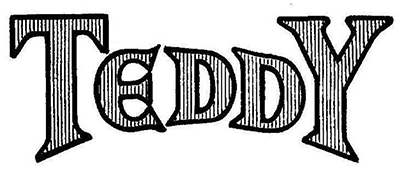Sweet defeat for Lindt: Appointed person dismisses appeal in Teddy v Teddylicious dispute
The appointed person has upheld a decision made by the UK Intellectual Property Office (UKIPO) in rejecting an opposition made by Chocoladefabriken Lindt & Sprungli AG (Lindt) against a UK trade mark application for the figurative mark TEDDYLICIOUS in relation to chocolate desserts, cakes, and related retail and wholesale services in class 30 and 35.

Background
Ibran Yasin applied to register a figurative application for the figurative mark TEDDYLICIOUS in respect of chocolate desserts, cakes, and related retail and wholesale services in classes 30 and 35.
Chocoladefabriken Lindt & Sprungli AG (Lindt), the Swiss Chocolatier, had opposed the application including under Sections 5(2)(b) of the Trade Marks Act relying on its earlier marks incorporating the word TEDDY, registered for goods in relation to chocolate confectionery, cocoa, and chocolate powder.
Genuine use
Lindt’s earlier trade marks were subject to proof of use in relation to chocolate products. The evidence failed to demonstrate genuine use of all of the earlier EUTM registrations relied upon; however, the opposition was able to proceed on the basis of the European Trade Mark (EUTM) for TEDDY (stylised):

Likelihood of confusion
In arguing likelihood of confusion between the marks, Lindt stressed the importance of the beginnings of the marks, arguing that the marks were visually and aurally similar to a significant degree given the identical prefix “TEDDY” and conceptual similar, conveying the concept of a teddy, such that there was likelihood of confusion between the marks. However, the hearing officer disagreed with Lindt’s arguments, emphasising that the overall impact and perception of the marks on the average consumer played a more important role in the comparison of marks than the prefixes of the marks alone. The average consumer was held to be one who selects goods and services visually. As such, they would find the construction and overall impression of the made-up word “Teddylicious” striking, and would focus on this aspect. The marks were visually and aurally similar to a low to medium degree on this basis.
The conceptual similarity was diminished by the fact that the word “Teddylicious” is allusive of the goods and services being delicious, and conveys a different concept from the word “TEDDY” alone because it is a made-up word. Moreover, even if the concept of a teddy was recognised within the mark, when used in connection with the applicant’s goods and services, which relate to desserts and cakes, the mark “TEDDYLICIOUS” was considered to convey a different concept, namely that of a made-up word indicating deliciousness rather than a teddy, and therefore consumers would be unlikely to mistake the contested mark.
Despite Lindt’s arguments that the suffix “-licious” did not play a dominant or distinctive role in the overall perception of the mark, and that it was common for brand owners in the food sector to add the suffix “-licious” to their brands to create sub-brands, the hearing officer rejected these arguments.
Appeal
On appeal, the appointed person rejected Lindt’s arguments, and reaffirmed the hearing officer’s position, stating that there was no evidence to support the contention of brands in the marketplace adding the suffix “-licious” to create sub-brands. Even though “-licious” was held to be likely to evoke the word “delicious,” as part of the coined word “Teddylicious”, and should not therefore be artificially dissected.
Lindt argued that the hearing officer had given too much importance to the differences between the marks and goods/services in question, and not enough weight to the similarities, leading to an incorrect decision being made. However, the appointed person clarified that trade marks must be assessed as a whole, and not by “dismembering” or “excising” the mark. It was held that the decision taker must evaluate the net effect of the similarities and differences between the marks and the goods and services in question.
The appointed person found that the hearing officer had followed this approach and assessed the marks based on their net effect, taking into account the relevant factors. The hearing officer’s decision was therefore legally correct, and there was no error in the factual determination. As a result, Lindt’s appeal was dismissed.
In short
This case serves as a reminder that being the owner of a well-known brand does not necessarily guarantee success in an opposition. Assessing the likelihood of confusion requires nuanced analysis of the mark as a whole and its impression on the relevant public. On appeals, it is notable that registry decisions can in reality only successfully be challenged if there is an identifiable flaw in the hearing officer’s decision, which renders the disputed conclusion rationally insupportable. In this case, that was held to be lacking.
Case details
Jurisdiction: United Kingdom
Decision level: UKIPO and appointed person
Parties: Chocoladefabriken Lindt & Sprungli Ag and Ibran Yasin
Date: 08 April 2022
Citation: O/313/22
Case details
Jurisdiction: United Kingdom
Decision level: UKIPO and appointed person
Parties: Chocoladefabriken Lindt & Sprungli Ag and Ibran Yasin
Date: 12 January 2023
Citation: O/0032/23

